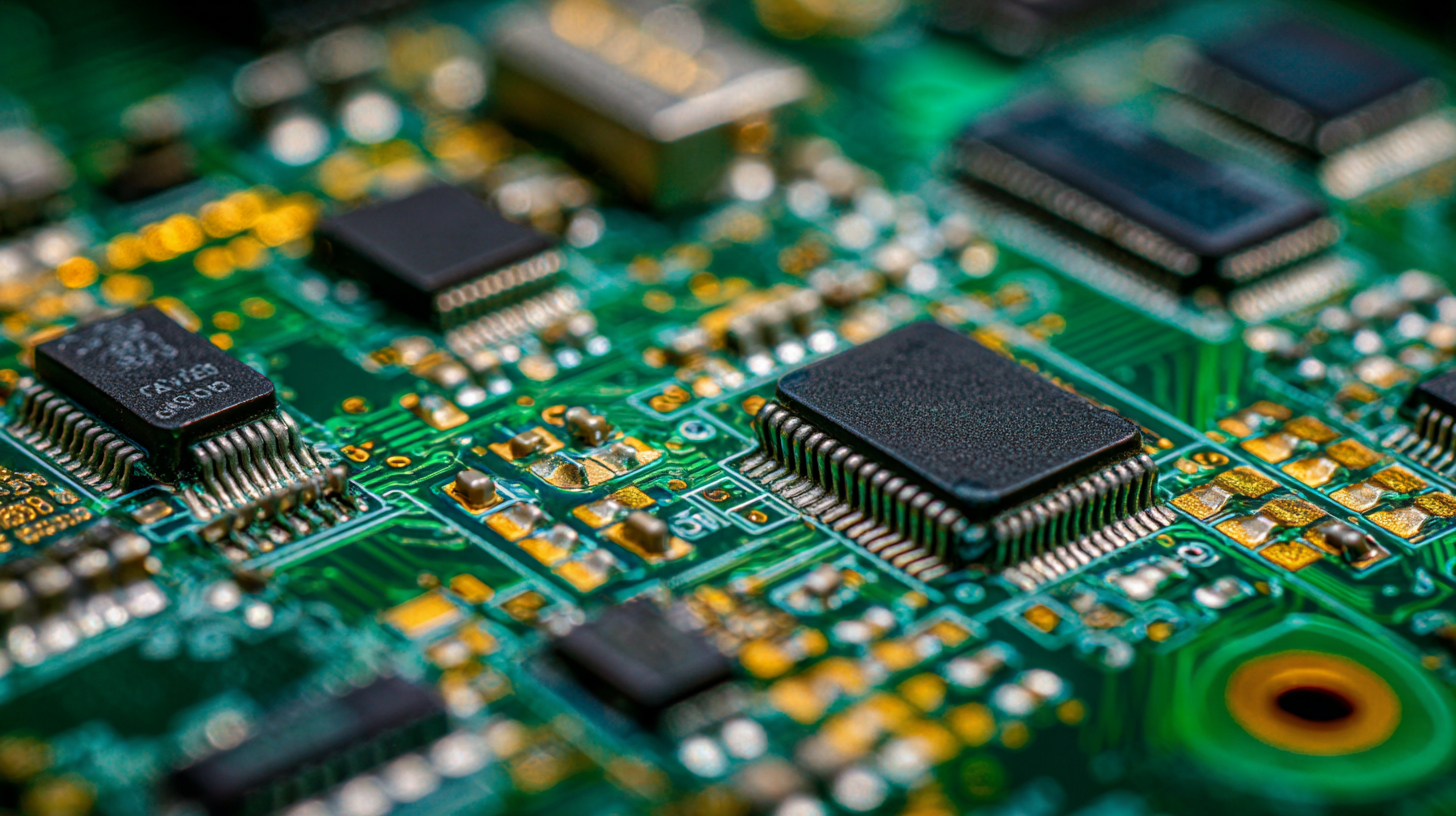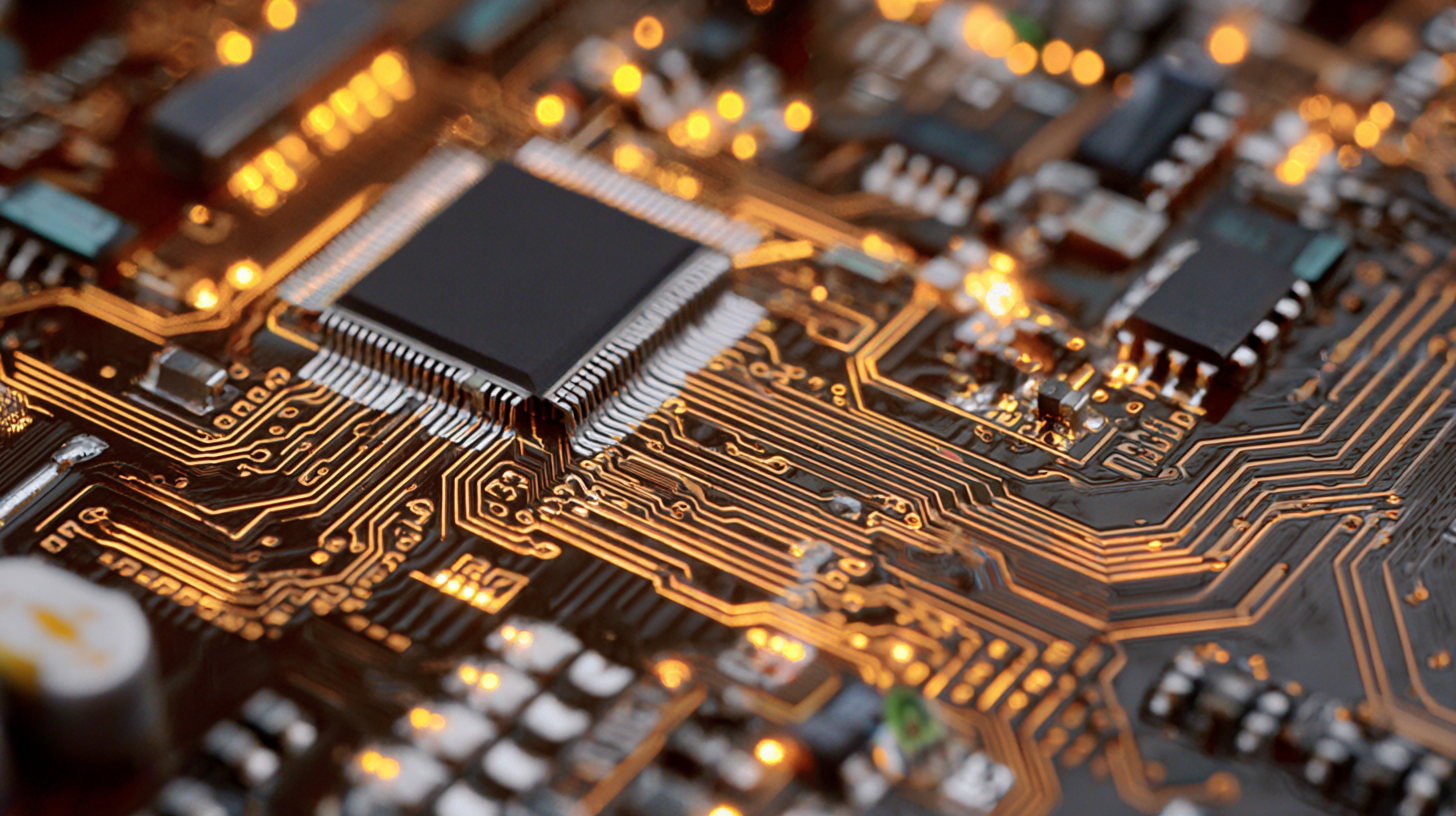Understanding the Differences Between Rigid and Flex Circuit Boards
In the ever-evolving world of electronics, understanding the fundamental differences between rigid and Flex Circuit Boards is crucial for designers and engineers alike. Flex Circuit Boards, known for their unique adaptability and lightweight characteristics, offer a range of advantages that rigid boards often cannot match. As products become more compact and the demand for innovative designs increases, embracing the functionality of Flex Circuit Boards can lead to enhanced performance and efficiency. This blog delves into the key distinctions between these two types of circuit boards, exploring their respective applications, benefits, and limitations, to help you make informed decisions in your electronic design projects. Whether you're designing for consumer gadgets or complex machinery, recognizing the strengths of Flex Circuit Boards can significantly influence your project outcomes.
Key Characteristics of Rigid Circuit Boards: An In-Depth Analysis
Rigid circuit boards, or PCBs, are essential components in a vast array of electronic devices. These boards are characterized by their solid substrate, providing structural support and stability, which makes them ideal for applications requiring durability. According to a recent report by the IPC (Association Connecting Electronics Industries), the global market for rigid PCBs is projected to grow at a CAGR of 5.7% over the next five years, highlighting their critical role in sectors such as automotive, telecommunications, and consumer electronics.
When examining the key characteristics of rigid circuit boards, several factors come into play, including their thermal and electrical performance. Rigid PCBs can effectively manage heat dissipation, a crucial aspect for high-performance electronics. Moreover, their robust design allows for a higher density of components, accommodating complex circuit patterns. However, manufacturers need to consider the limitations of rigidity, particularly in applications demanding flexibility or intricate forms.
**Tip**: When selecting rigid PCBs, pay close attention to material specifications and thermal properties to ensure they meet the operational demands of your specific application. Additionally, collaborating with suppliers who have extensive experience in rapid prototyping can significantly expedite your product development timeline. Make sure to evaluate lead times and production capacities before finalizing your choice.
Understanding the Differences Between Rigid and Flex Circuit Boards
| Characteristic |
Rigid Circuit Boards |
Flex Circuit Boards |
| Material |
FR-4 (fiberglass epoxy resin) |
Polyimide or polyester |
| Flexibility |
Rigid |
Flexible |
| Layer Count |
Typically 1-12 layers |
Typically 1-8 layers |
| Cost |
Generally lower |
Generally higher |
| Applications |
Consumer electronics, automotive |
Wearable devices, medical equipment |
| Thermal Management |
Good thermal management |
Superior thermal management |
| Assembly Complexity |
Less complex |
More complex |
Advantages and Disadvantages of Flex Circuit Boards
Flex circuit boards offer several advantages that make them appealing for various applications. One of the primary benefits is their flexibility, allowing them to fit into tight spaces and conform to unconventional shapes—something rigid boards often cannot achieve. This design versatility is crucial in industries such as consumer electronics, automotive, and medical devices, where space is at a premium. Furthermore, flex circuits can reduce assembly time and weight in products, as they can integrate multiple functionalities onto a single, lightweight substrate.
However, despite these advantages, flex circuit boards also come with certain disadvantages. The manufacturing process can be more complex and costly compared to rigid boards, leading to higher production expenses, especially for small quantities. Additionally, they are typically more delicate, making them susceptible to damage during handling or installation, which can impact long-term reliability. This fragility might necessitate additional considerations in product design and manufacturing processes to ensure durability in demanding environments. Understanding these trade-offs is crucial for engineers and designers when selecting the appropriate circuit technology for their projects.
Understanding the Differences Between Rigid and Flex Circuit Boards
Comparing Manufacturing Processes for Rigid and Flex Circuits
 When it comes to manufacturing printed circuit boards (PCBs), understanding the processes for rigid and flexible circuits is crucial for optimizing both performance and cost. Rigid circuit boards, commonly made from fiberglass or epoxy, follow a relatively straightforward manufacturing process involving multiple layers of printed circuitry bonded together, with drilling and plating steps for component attachment. Conversely, flexible circuit boards utilize materials like polyimide that can bend and twist, allowing for more complex designs and integration into smaller spaces. The production of flex circuits involves advanced techniques like laser cutting and selective soldering, which cater to their unique requirements.
When it comes to manufacturing printed circuit boards (PCBs), understanding the processes for rigid and flexible circuits is crucial for optimizing both performance and cost. Rigid circuit boards, commonly made from fiberglass or epoxy, follow a relatively straightforward manufacturing process involving multiple layers of printed circuitry bonded together, with drilling and plating steps for component attachment. Conversely, flexible circuit boards utilize materials like polyimide that can bend and twist, allowing for more complex designs and integration into smaller spaces. The production of flex circuits involves advanced techniques like laser cutting and selective soldering, which cater to their unique requirements.
Tip: When selecting rigid or flex PCBs, consider the application environment. Rigid boards are preferable for static installations, while flexible boards excel in dynamic applications requiring movement or tight spaces.
Furthermore, the assembly techniques differ significantly; rigid boards often rely on conventional soldering methods, whereas flex circuits benefit from low-temperature soldering and advanced adhesive technologies. This can affect the overall reliability of the end product.
Tip: Collaborating with manufacturers familiar with both technologies can provide insights into optimizing designs for cost-effectiveness and durability, ensuring the chosen circuit type meets project specifications efficiently.
Application Areas: When to Use Rigid vs. Flex Circuit Boards
When evaluating circuit board options, one must consider the specific application areas where rigid and flex circuit boards excel. Rigid circuit boards are ideal for applications requiring structural stability and robustness, such as in consumer electronics, automotive systems, and industrial controls. According to a report by IPC, the global market for rigid PCBs is projected to reach $59.4 billion by 2025, driven by increasing demand in these sectors. Their inherent strength makes them suitable for high-density interconnections and complex circuitry, providing reliable performance in standard operating conditions.
In contrast, flex circuit boards offer unique advantages in applications where space is limited and flexibility is paramount. They are often utilized in wearable technology, medical devices, and aerospace equipment. The market for flexible PCBs is expected to grow significantly, with an estimated CAGR of 10.2% through 2027, according to a report by Mordor Intelligence. The lightweight and adaptable nature of flex circuits allows for innovative designs that can conform to various shapes, making them invaluable in cutting-edge technology requiring both agility and miniaturization. Understanding these distinctions enables designers and engineers to choose the right type of circuit board for their specific needs, enhancing performance and functionality.

Cost Considerations: Budgeting for Rigid and Flex PCB Projects
When embarking on a PCB project, understanding the cost implications of choosing between rigid and flexible circuit boards is paramount. Rigid PCBs, often favored for their structural integrity, generally come with a higher manufacturing cost due to their materials and fabrication processes. These boards are ideal for applications where durability and strength are primary concerns, such as in automotive and industrial sectors. In contrast, flexible PCBs offer unique advantages, including lightweight design and the ability to fit into compact spaces. Although the initial cost may be lower for basic flexible designs, advanced applications can lead to increased expenses based on complexity and customization requirements.
As the global automotive PCB market anticipates growth, companies must budget effectively for their PCB projects. With the market projected to expand from $9.15 billion in 2023 to $15.10 billion by 2032, businesses should consider factors such as material costs, production volume, and lead times when planning their budgets. It’s crucial to evaluate the long-term performance benefits versus upfront costs for both rigid and flexible PCBs to ensure optimal investment and project outcomes. Understanding these nuances allows manufacturers to navigate their choices wisely, ensuring they choose the right type of PCB for their specific needs.